
Emilio Santarelli (1 August 1801- 29 October 1889) was an Italian sculptor active mainly in Florence.

Emilio Santarelli (1 August 1801- 29 October 1889) was an Italian sculptor active mainly in Florence.

He was born in Florence to Giovanni Antonio Santarelli, who worked as an engraver of cameo jewelry. [1] He enrolled in 1814 at the Academy of Fine Arts of Florence, where he took classes with Francesco Carradori and Stefano Ricci (sculptor). In 1824, he won a stipend to study in Rome with Bertel Thorvaldsen. In Rome, he also met with Augustin Dumont. He was a prolific sketch artist and created many plaster models and studies.
In 1831, Santarelli collaborated on the stucco decoration for the ballroom of the Meridiana building of Palazzo Pitti, built by Pasquale Poccianti. He was engaged by Poccianti to also complete stuccoes for the Chapel of the Madonna in the sanctuary of Maria Madre di Dio at San Romano, near San Miniato al Tedesco.
In Florence, he completed the bas-relief for the tomb of the Countess of Albany in Santa Croce, Florence; the Countess' statue was completed by Luigi Giovannozzi. [2] Also for pantheon- former church of Santa Croce, Santarelli in 1836 sculpted the monument to Giovan Vincenzo Alberti, former minister to the Grand-Dukes of Tuscany. This statue was commissioned by Giovan Vincenzo's son, Leon Battista Alberti, who also commissioned the monument to his famous ancestor of the same name, which is located across the nave and sculpted by Lorenzo Bartolini. [3] He also completed in 1838, a bas-relief for the funerary monument of the painter Francesco Sabatelli.
In 1832, he designed the reliefs for the base of the monument to Pietro Leopoldo erected in Pisa. The artist and patron François-Xavier Fabre commissioned from Santarelli an Immaculate Conception for the cathedral of Montpellier. Fabre would designate Santarelli as heir to his collections of drawings from artists from the Renaissance and Baroque eras. This collection is now in possession of the Uffizi Museum.
In 1837 Santarelli was able to buy a comfortable house and garden in Via della Chiesa #44 in Oltrarno. He was known for his cultivation of Camellias. In 1840, he completed the statue of Michelangelo for the series of prominent Tuscans displayed in niches on the ground floor courtyard of the Uffizi gallery, commissioned in 1836 by the committee established by Vincenzo Batelli.
Among his early free-standing statues were Apocrate (1838), La concezione (1858), Amor puro and Amor terreno. [4]
He subsequently also made a number of statues titled Malignant love, Giovinetto cacciatore, Love in ambush, Love with butterfly, Poor Child, "Baccante corcata who is joking with a satirino", The fallen lily, and Prayer of Innocence. In 1865 he completed the monument of Giuseppe Bezzuoli, located in the church of San Miniato al Monte. Santarelli hired the sculptors Pietro Freccia and his brother, Clearco, to work with him until 1847. In 1866 he donated to the Uffizi his collection of drawings by ancient and contemporary authors. [5]
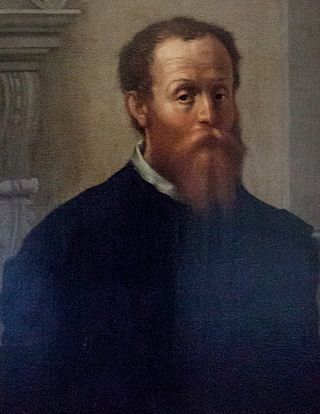
Baccio Bandinelli, was an Italian Renaissance sculptor, draughtsman, and painter.

Antonio Gamberelli (1427–1479), nicknamed Antonio Rossellino for the colour of his hair, was an Italian Renaissance sculptor. His older brother, from whom he received his formal training, was the sculptor and architect Bernardo Rossellino.
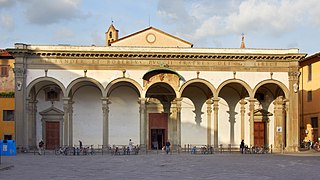
The Basilica della Santissima Annunziata is a Renaissance-style, Catholic minor basilica in Florence, region of Tuscany, Italy. This is considered the mother church of the Servite Order. It is located at the northeastern side of the Piazza Santissima Annunziata near the city center.

Lorenzo Bartolini was an Italian sculptor who infused his neoclassicism with a strain of sentimental piety and naturalistic detail, while he drew inspiration from the sculpture of the Florentine Renaissance rather than the overpowering influence of Antonio Canova that circumscribed his Florentine contemporaries.

The Loggia dei Lanzi, also called the Loggia della Signoria, is a building on a corner of the Piazza della Signoria in Florence, Italy, adjoining the Uffizi Gallery. It consists of wide arches open to the street. The arches rest on clustered pilasters with Corinthian capitals. The wide arches appealed so much to the Florentines that Michelangelo proposed that they should be continued all around the Piazza della Signoria.

Aristodemo Costoli (1803–1871) was an Italian sculptor who spent his entire career in the city of Florence. He is also known for attempting in 1843 to clean and conserve the famed Renaissance-era sculpture David by Michelangelo; unfortunately his hydrochloric acid cleaning solution removed the stone's waxy protective coating and left the surface pitted and porous. His students included Emilio Zocchi, Girolamo Masini, Augusto Rivalta and his son Leopoldo Costoli.
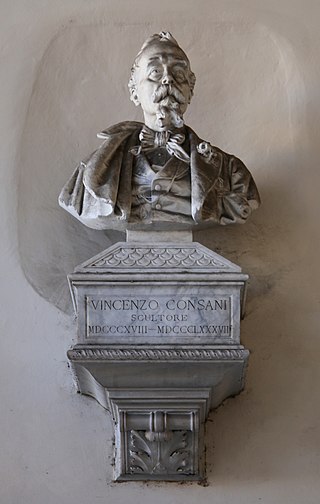
Vincenzo Consani (1818-1888) was an Italian sculptor from the Canova school. Consani's marble masterpiece statue Vittoria (1859) is in the Pitti Palace in Florence.

Sant'Anna dei Lombardi,, and also known as Santa Maria di Monte Oliveto, is an ancient church and convent located in piazza Monteoliveto in central Naples, Italy. Across Monteoliveto street from the Fountain in the square is the Renaissance palace of Orsini di Gravina.

Emilio Zocchi was an Italian sculptor. He is best known for his busts, bas-reliefs and statuettes of classical and Renaissance individuals.

Giovanni Battista Maini was an Italian sculptor of the Late-Baroque period, active mainly in Rome.
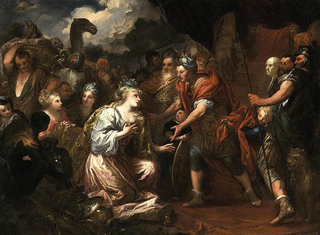
Pietro Dandini was an Italian painter of the Baroque period, active mainly in Florence.

Cosimo Fancelli was an Italian sculptor of the Baroque period, active mainly in Rome. He worked on a number of commissions with Pietro da Cortona from 1647 until Cortona's death in 1669. Gian Lorenzo Bernini considered him one of the best sculptors in Rome.

Pietro Tenerani was an Italian sculptor of the Neoclassic style.

Augusto Rivalta was an Italian sculptor.

Tito Sarrocchi was an Italian sculptor.
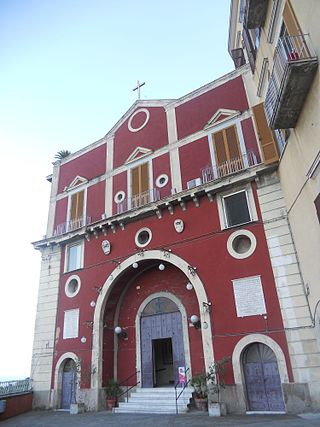
Santa Maria del Parto a Mergellina is a church located in the quartiere of Chiaia in Naples, Italy. The church is peculiarly perched on top of a private building and accessed by a stairway, placed behind a restaurant located in piazza Mergellina.
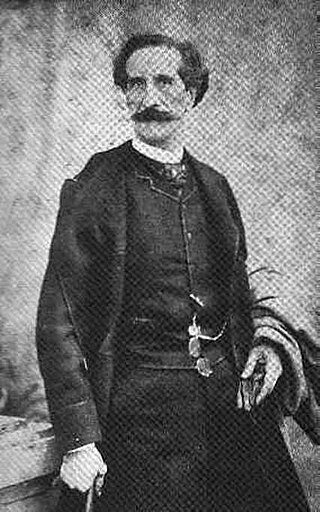
Cesare Sighinolfi was an Italian sculptor.

The Complesso di San Firenze is a 17th-century Baroque-style building, consisting of a church, palace, and former oratory, located on the southeast corner of the saucer-shaped piazza of San Firenze, located in the quartiere of Santa Croce in central Florence, region of Tuscany, Italy. The buildings were commissioned by the Oratorians of Saint Philip Neri.
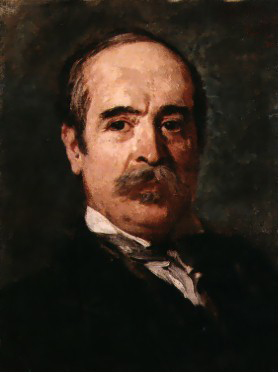
Francesco Jerace was an Italian sculptor.
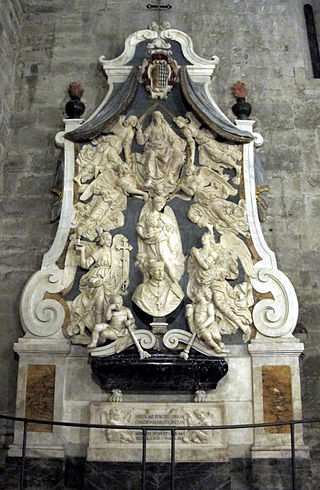
The Funerary Monument to Cardinal Niccolo Forteguerri is an assembly of mostly deep bas-relief sculptures installed posthumously on a wall of the Cathedral of Pistoia to memorialize the native Cardinal. While the initial design for this monument was completed by the Renaissance sculptor Andrea Verrochio, the present arrangement, completed centuries later, was assembled with substantial modifications by lesser-known artists.